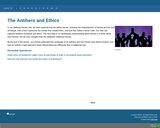
This lesson introduces the antihero archetype and how ethics relates to antiheroes.
- Subject:
- English Language Arts
- Material Type:
- Activity/Lab
- Author:
- Aaron Eldridge
- Date Added:
- 07/06/2019

This lesson introduces the antihero archetype and how ethics relates to antiheroes.
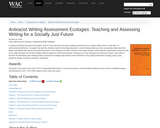
In Antiracist Writing Assessment Ecologies, Asao B. Inoue theorizes classroom writing assessment as a complex system that is "more than" its interconnected elements. To explain how and why antiracist work in the writing classroom is vital to literacy learning, Inoue incorporates ideas about the white racial habitus that informs dominant discourses in the academy and other contexts. Inoue helps teachers understand the unintended racism that often occurs when teachers do not have explicit antiracist agendas in their assessments. Drawing on his own teaching and classroom inquiry, Inoue offers a heuristic for developing and critiquing writing assessment ecologies that explores seven elements of any writing assessment ecology: power, parts, purposes, people, processes, products, and places.

After reading this module, you will be able to:Discuss the strengths and weaknesses of archivall research and case studiesDescribe longitudinal, cross-sectional, and sequential research designs
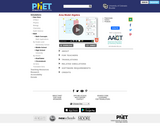
Build rectangles of various sizes and relate multiplication to area. Discover new strategies for multiplying algebraic expressions. Use the game screen to test your multiplication and factoring skills!
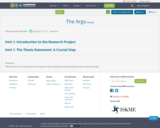
This resource is to introduce the writing of a thesis statement and introduction for a research essay.
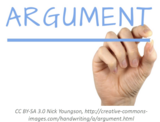
Argument is a familiar concept to most people; however, to win an argument, or at least, to argue points effectively is not so easy. In this seminar, you will learn the basic concepts surrounding argument and, in turn, develop an argument utilizing components that set you up for success. Remember, argument does not mean yelling at someone because you think you’re right; argument refers to logical thinking with clear points, building toward a specific outcome.StandardsCC.1.2.9-10.H: Delineate and evaluate the argument and specific claims in a text, assessing the validity of reasoning and relevance of evidence.CC.1.4.9-10.C: Develop and analyze the topic with relevant, well-chosen, and sufficient facts, extended definitions, concrete details, quotations, or other information and examples appropriate to the audience’s knowledge of the topic; include graphics and multimedia when useful to aiding comprehension.CC.1.4.9-10.G: Write arguments to support claims in an analysis of substantive topics.

This resource is designed to walk students through the process of completing a research project in any field of study. It covers the earliest stages of brainstorming and discussing, continues through researching and compiling sources; writing, documenting, revising, and polishing a paper; and finally presenting the research topic to a wider audience in a professional manner. The focus is on MLA format, though the course could be modified for other formats.
The first unit is an introduction to the project. It asks students to draw on knowledge of issues affecting their own community and world to help generate discussion that could eventually lead to a research topic.
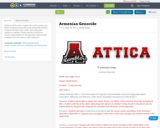
Students will be able to explain the causes, events, and effects of the Armenian Genocide during World War I. Students will then write a letter advocating their opinion on whether Turkey should or should not assume responsibility for the genocide, citing specific examples from the lesson in their argument.
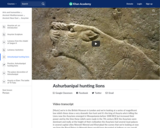
Ashurbanipal Hunting Lions, gypsum hall relief from the North Palace, Ninevah, c. 645-635 B.C.E., excavated by H. Rassam beginning in 1853 (British Museum). Speakers: Dr. Steven Zucker & Dr. Beth Harris

Students use a source text from IEW's Ancient History-Based Writing Lessons to write a two-paragraph essay about Ashurbanipal's Library from a keyword outline. There is also a linked art history video from OER Commons entitled "Palace Decoration of Ashurbanipal" to give more interesting background on King Ashurbanipal.
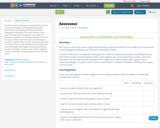
The Assessment of Authentic Learning Rubric focuses on the areas of agency and authenticity, concepts derived from the Student as Producer and Social Pedagogies frameworks. The rubric consists of five areas: learning tasks, learning process, social core, learning assessments, and lifelong learning. Each of the five areas contains statements that course designers can use to evaluate their course/s. Instructors may elect to use the rubric as a self-evaluation tool or might elect to work through it with support from an instructional designer. The rubric can be used for course taught in a variety of modalities including online, hybrid, and face-to-face.
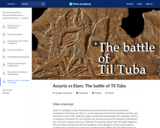
The battle of Til Tuba reliefs are among some of the great masterpieces of ancient Assyrian art. The movement and details are truly stunning. That said, the scenes actually being depicted are anything but easy on the eye. Join curator Gareth Brereton as he walks you through the reliefs that once decorated the last great king of Assyria's royal palace. WARNING: includes scenes of drowning, flaying and wearing your deceased leader's head as a necklace. DOUBLE WARNING: includes scenes of extreme royal hat misplacement. The BP exhibition I am Ashurbanipal: king of the world, king of Assyria 8 November 2018 – 24 February 2019
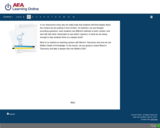
During this interactive teacher-driven module, teachers will learn about depth of knowledge and make connections to DOK. Teachers will be using popular game shows to make connections to DOK.
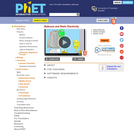
Students explore static electricity by rubbing a simulated balloon on a sweater. As they view the charges in the sweater, balloon, and adjacent wall, they gain an understanding of charge transfer. This item is part of a larger collection of simulations developed by the Physics Education Technology project (PhET). The simulations are animated, interactive, and game-like environments.
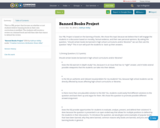
This is a PBL project that focuses on whether or not students believe banning books in their own curriculum is justified. The students will receive a review on a banned book and will then take that stance to defend the review.
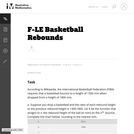
This task involves a fairly straightforward decaying exponential. Filling out the table and developing the general formula is complicated only by the need to work with a fraction that requires decisions about rounding and precision.
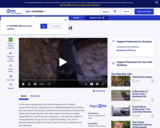
This video segment from the Nevada Department of Wildlife looks at various species of bats and how they impact the environment.

Look inside a resistor to see how it works. Increase the battery voltage to make more electrons flow though the resistor. Increase the resistance to block the flow of electrons. Watch the current and resistor temperature change.

Teaches kids the fundamentals of digital citizenship and safety.
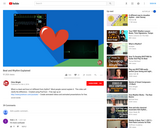
Beat versus Rhythm This lesson shows the difference between beat, like a heart beat, and rhythms. This video also gives examples.